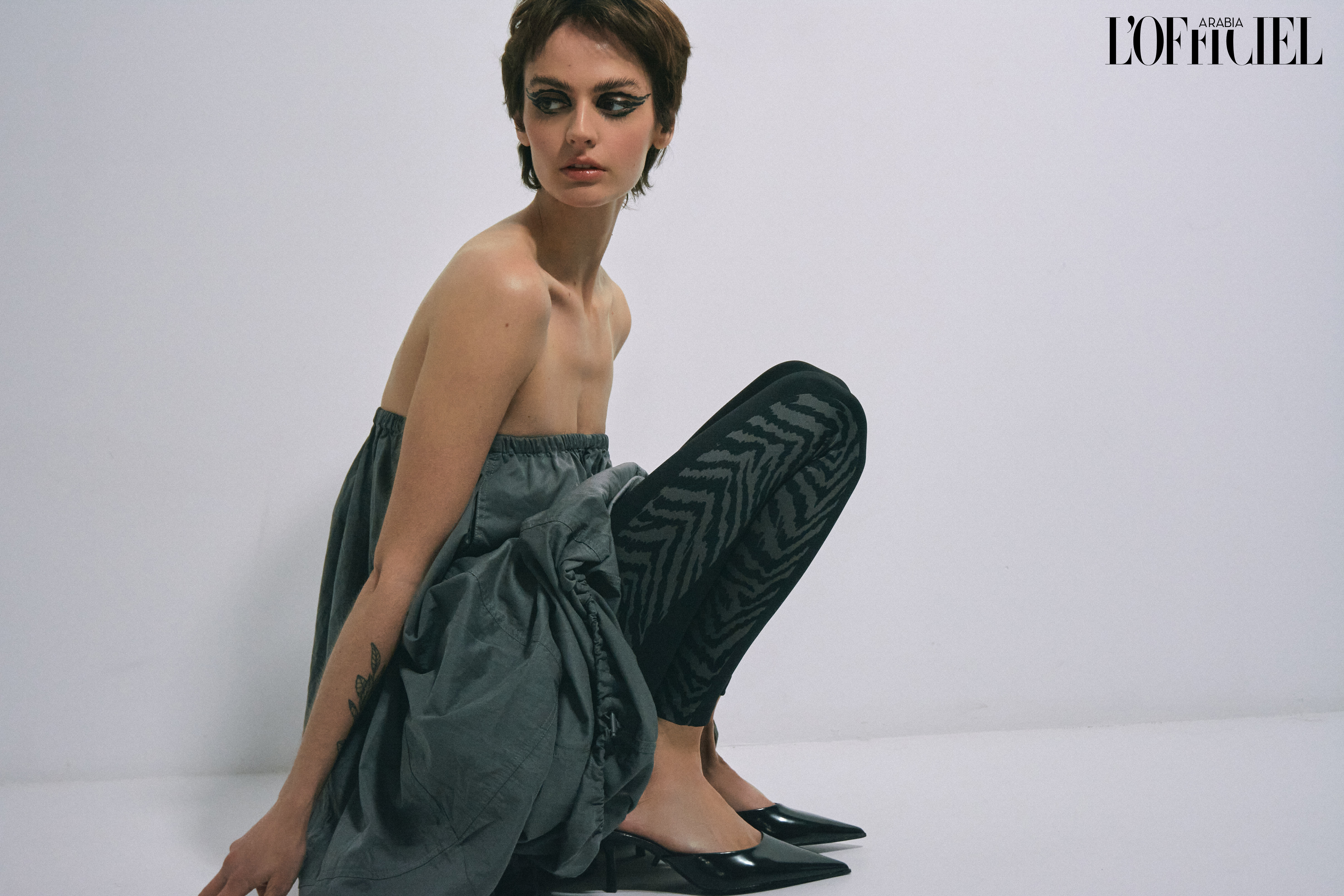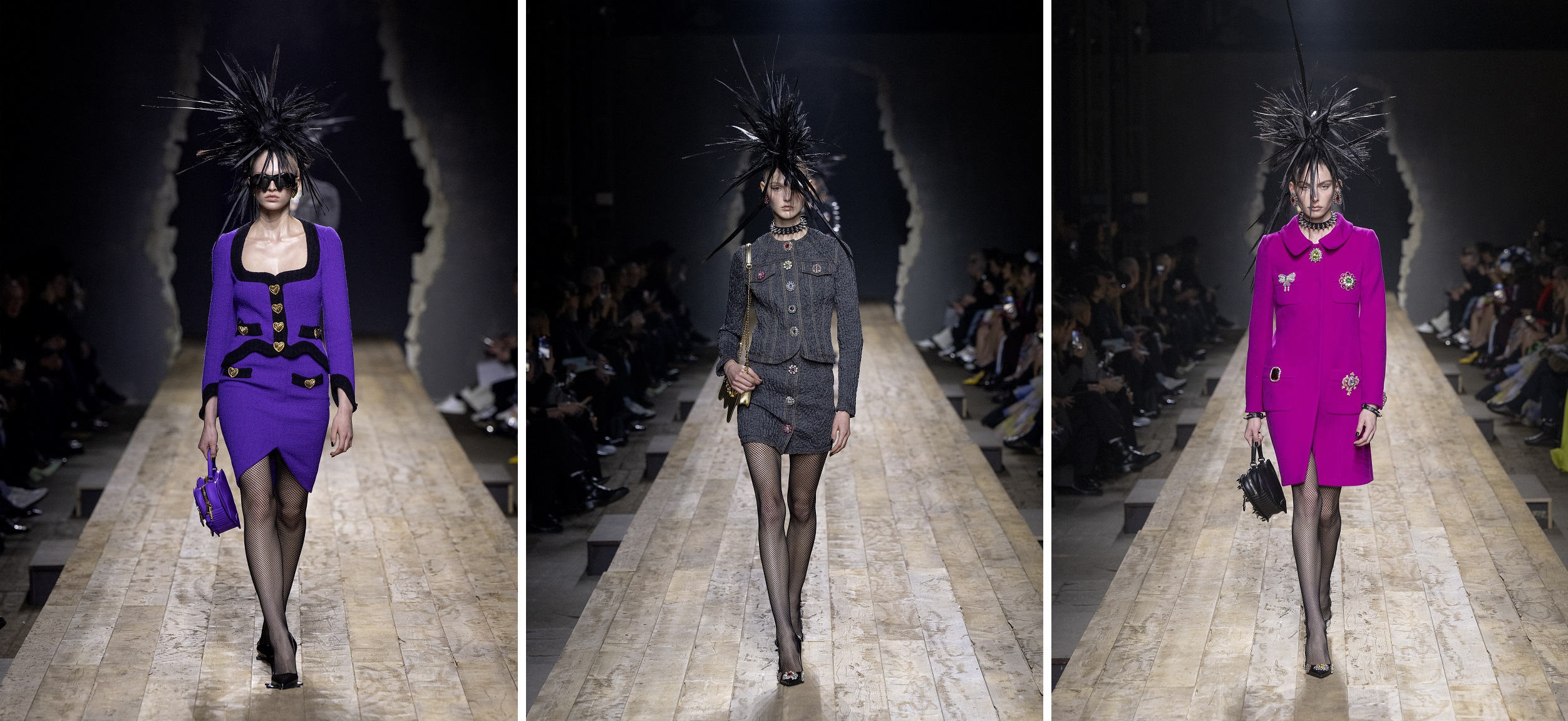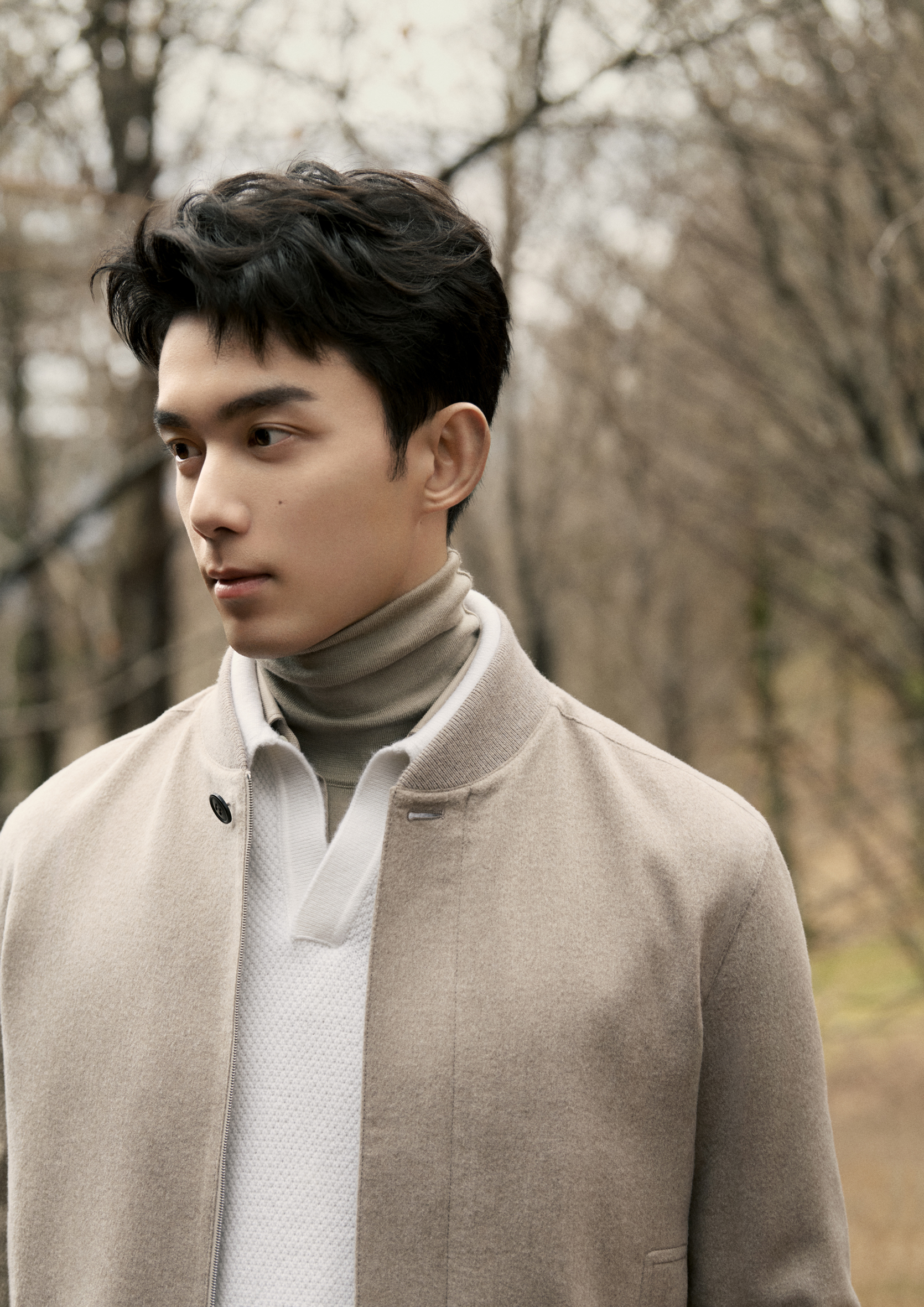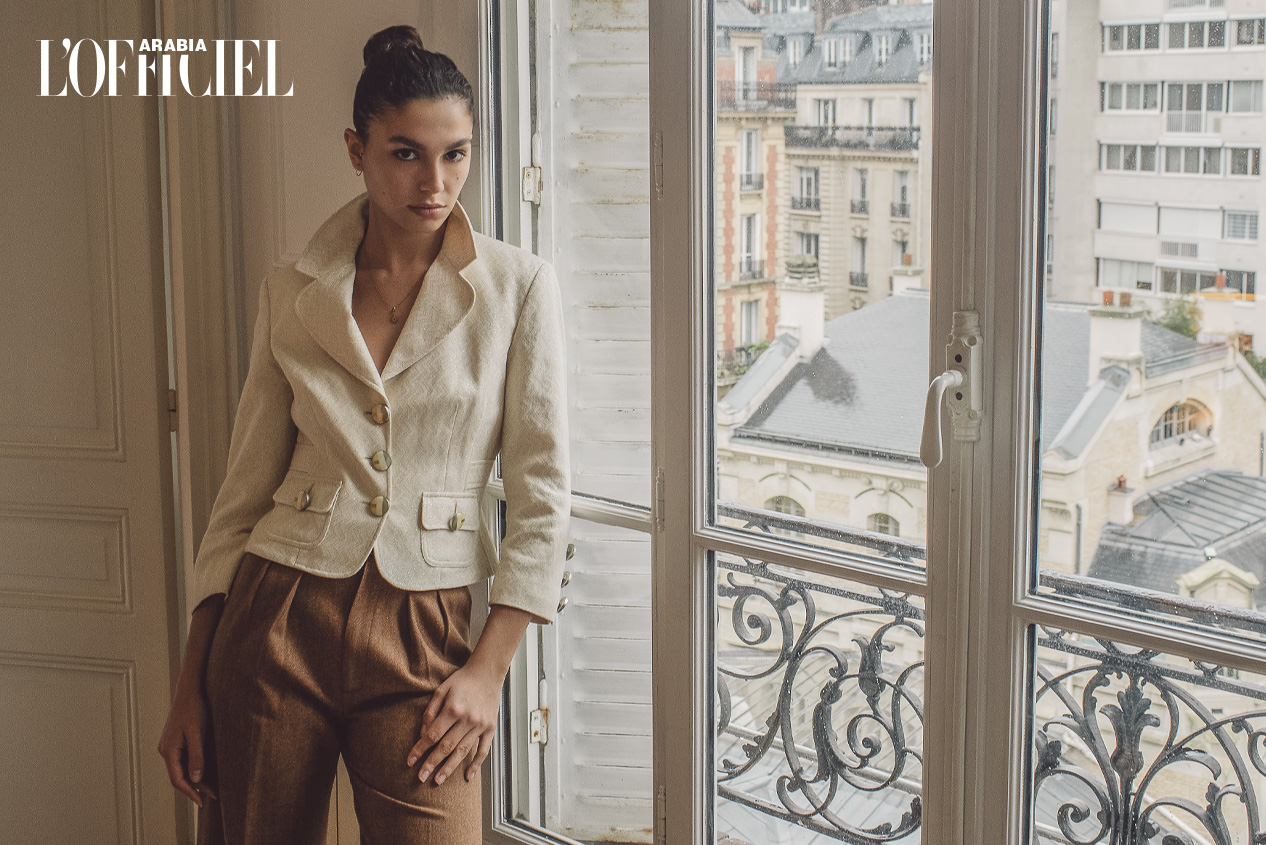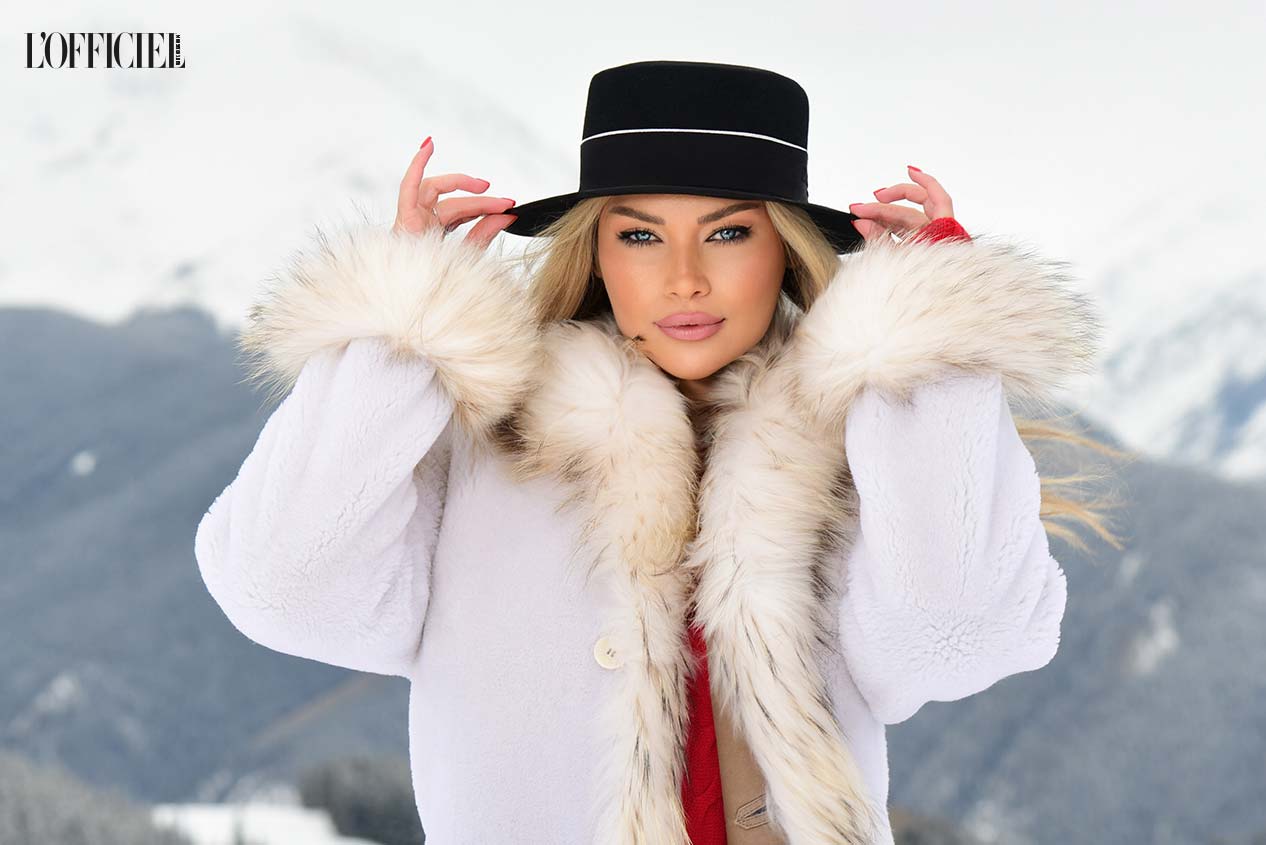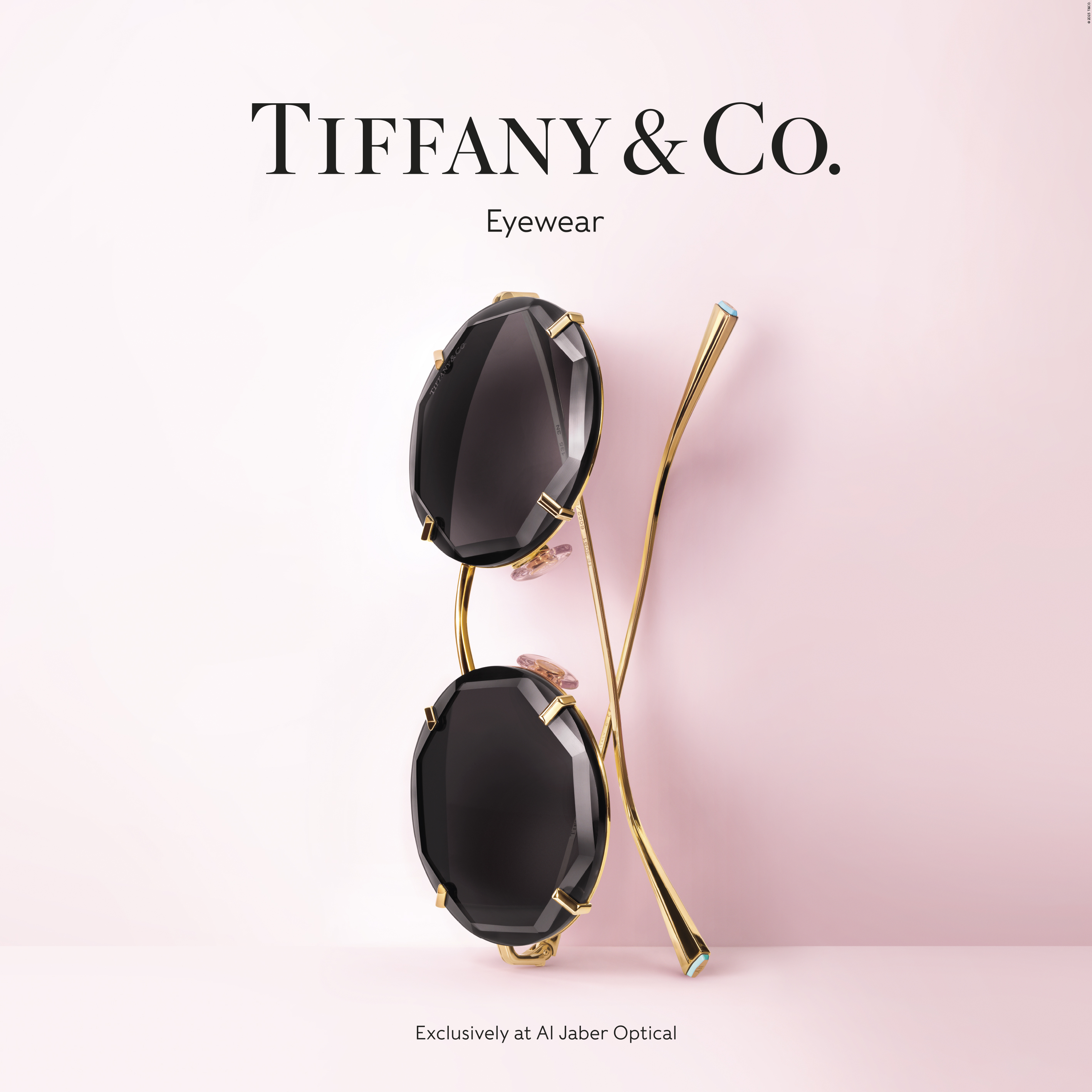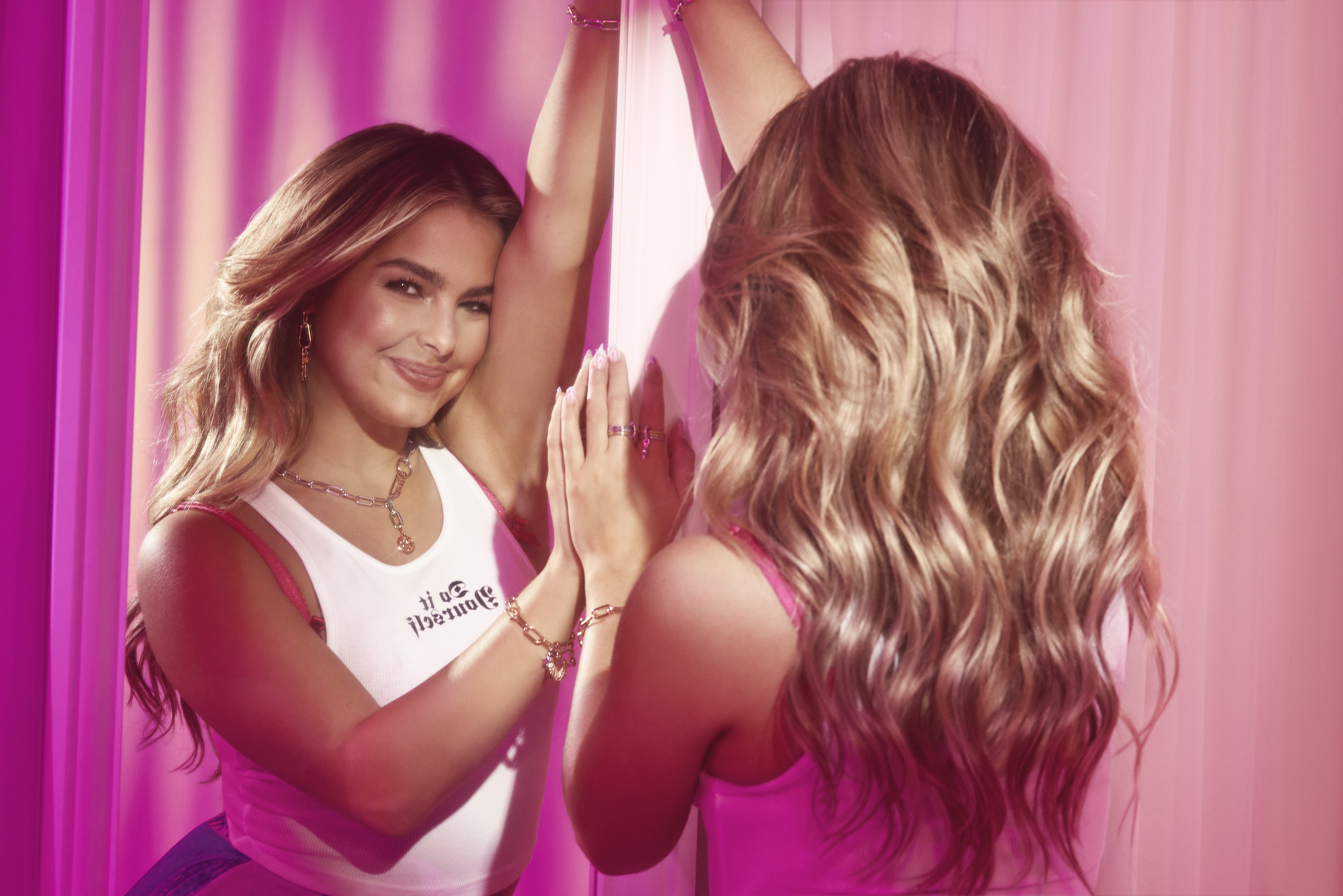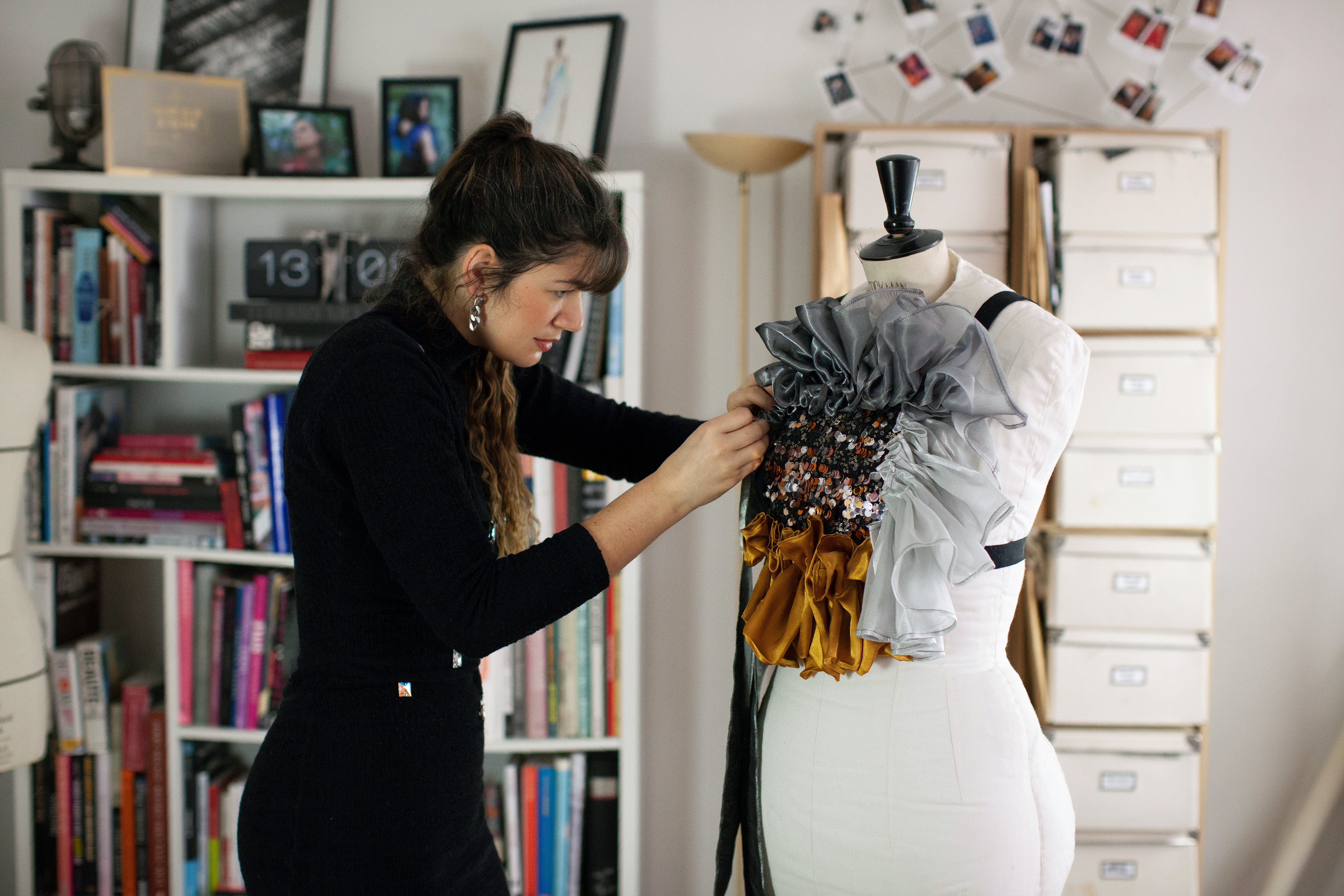
“Every item is entirely sewn and embroidered in our Parisian atelier near the Seine, allowing complete control and discretion over every piece.”
Following her passion for up-cycling, fashion designer Moïra Cristescu focuses on creating beauty from waste with sustainable made-to-measure looks with her namesake brand Moïra Cristescu Paris. The designer sees herself as part of the solution, not the problem, in an excess-driven industry that significantly contributes to waste and pollution.
I spoke with Moïra about her fashion experience, her unique designs, her commitment to sustainability, and her take on luxury and the future of the fashion industry.
Tanja Beljanski: You went to college at Central Saint Martins in London. Why did you choose London over Paris?
Moïra Cristescu: It wasn’t so much the city as it was the school. Central Saint Martins trained geniuses like John Galliano and Alexander Mc Queen, who was then, and still is, one of my strongest inspirations. Another groundbreaking alumni was Stella McCartney, who always championed sustainability, especially when it wasn't yet in the spirit of the times. Walking the same corridors, being taught with the same innovative approach, fostering creativity and experimentation seemed an opportunity impossible to resist. I had studied Fine Arts at La Sorbonne in Paris before, so St Martins, being in Central London, was the cherry on top! It was an opportunity to immerse in the edgy London scene, walking past Grace Jones in a club or running into Emma Thompson at an exhibition.
After more than a decade working for the top fashion designers and fashion houses in Paris, you have decided to create your own brand and go fully sustainable. Why?
I witnessed firsthand the waste universally generated in fashion houses. Each collection, a huge amount of swatches of fabrics, lace and embroidery are sampled from mills, to be assigned to designs. Sadly, most are disposed of by the end of the season. Gorgeous materials, precious ennoblements, hours of exceptional work simply discarded… but I was sure I could create beauty from waste, to paraphrase Orsola de Castro, a pioneering force in sustainable fashion advocacy. Indeed, at Moïra Cristescu Paris, all the materials are up-cycled from prestigious fashion houses and we conceive each creation to do justice to these outstanding materials and not waste any of it, creating fabulous pieces with them. I also closely observed the shipping volume associated with each collection. I was convinced we could avoid it without compromising the product. Thus, another commitment we uphold is to source and work locally, leveraging the exceptional resources and craftsmanship France has to offer.
What is the story behind your designs?
Our brand’s aesthetics arise from the confrontation between oneirism and geometry. Crisscrossing lines, sharp graphics impact the classic and sensual imagery of superb nymphs from Greek mythology, making it current. Our designs are as feminine as they are bold and daring: we are dressing contemporary goddesses, powerful fascinating women taking charge of their destiny and influencing the course of time right now. In a nod to their inspiration, our pieces are proudly named after these figures. For instance, our beige skirt with a gradient from green to purple and pink is named after the Oracle of Delphi, the priestess whose prophecies guided titans, heroes and the people alike.
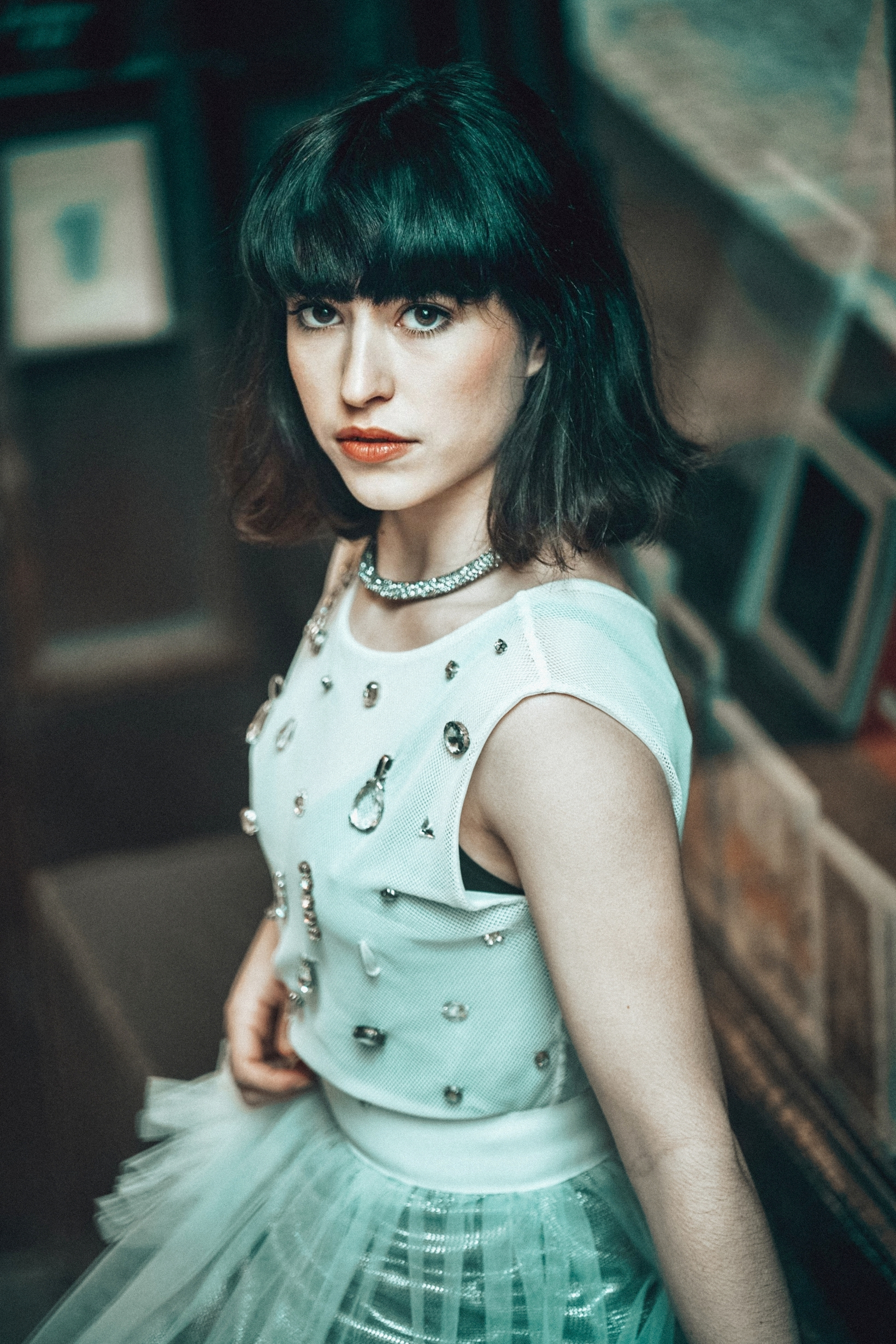
What is your creative process like? How do you design? What form do your earliest ideas for a collection take?
At Moïra Cristescu Paris, we always start from the materials: I look through my unique collection that I carefully handpicked over the years and I arrange a composition, a mix of materials that provokes a spark. We then sculpt with them directly on the mannequin, quickly drawing ideas on paper and going back and forth between the sketch and the fabric draft. Life at the atelier is very stimulating, as a lot of thought, actually a whole complete creative process is put into every design. This process is very exclusive, creating each time a completely unique piece, which cannot be reproduced. We maximise our use of every fabric which stimulates our creativity, it’s a constant challenge. We don’t really design in terms of collections, we either create custom-made dresses for a specific customer or add new pieces regularly to our wardrobe available for rental, thus continuously expanding our offer. To keep them interesting, we alter them on a regular basis: change the length, add a train or embroider them, so each and every one of them stays exciting.
Where do you look for the fabrics, threads, accessories? Please tell us about your production process and your studio.
Our sourcing process is very specific. We visit Couture fashion houses to choose distinctive samples or exceptional fabrics that they ended up not using, but also all other sewing supplies such as zippers or threads. I walk through Paris antique shops and flea markets myself every week to collect ancient jewellery or ornaments for the embroideries. Some crystal elements come from chandeliers! I have gathered quite a treasure trove over the years, which allows me to wander through, and make a selection for the next creation. This sourcing process is much more demanding, as all materials must meet the high eco-friendly standards required by our brand. A specific supply may take months to locate, which makes it all the more exclusive, as well as ensuring the uniqueness of every design. None of the pieces could ever be replicated.
This exclusivity is guaranteed by our production process as well, as we craft one-of-a-kind dresses directly on the mannequin. Every item is entirely sewn and embroidered in our Parisian atelier near the Seine, allowing complete control and discretion over every piece.

What makes your designs special; what makes them unique?
Their sole purpose is to sublimate every woman, in her individuality and morphology. Our creations reveal the contemporary amazons that they are, contrasting poetry and graphics, playing on the balance of vibrant colours against black and white and of opacity versus chosen transparency. I have dressed celebrities for a dozen years for Couture fashion houses all over the world, which taught me greatly as fashion faux pas were a constant danger, and the celebrity had to captivate the audience from all angles: a first-rate experience. Fulfilling and even exceeding VIP’s expectations has certainly shaped my relationship to design, as has working closely with Mr. Karl Lagerfeld for almost a decade. It gave me an eye for detail, always looking for perfection, but also learning to let the garment live on the body. His boundless artistic knowledge and witty advice still guide my work.
How do you balance good business decisions with your creative and ecological mission?
Sustainability is the very core of Moïra Cristescu Paris, I would never compromise my values. So, in this regard, decisions are easily made, even if they are costly in this very competitive industry. Regarding creativity, I treat it more as a challenge, not a constraint. Only using materials I can source locally and from up-cycling, is a perpetual quest to unearth wonders, which is really thrilling. And trying to find a combination of materials that a fantastic design will originate from is quite exhilarating. In fact, there isn’t always a conflict, as values and good business can align as well. We were originally specialised in made-to-measure orders that we developed closely with the customer. But we have also been offering for the last couple of years the possibility of renting looks from a wardrobe of a hundred pieces, each and every one completely unique. In diverse sizes, most can easily be adjusted. This reduces the consumption of dresses to be worn only once, whilst extending the range of services to our clientele. Good business decisions in my mind come from adaptability. Carefully listening to customers, keep perfecting our understanding of their needs to fulfil them. As designers we are not artists, we are craftspeople, we do create an artistic piece but directed to a client, not for art’s sake. It’s important to always keep this in mind.
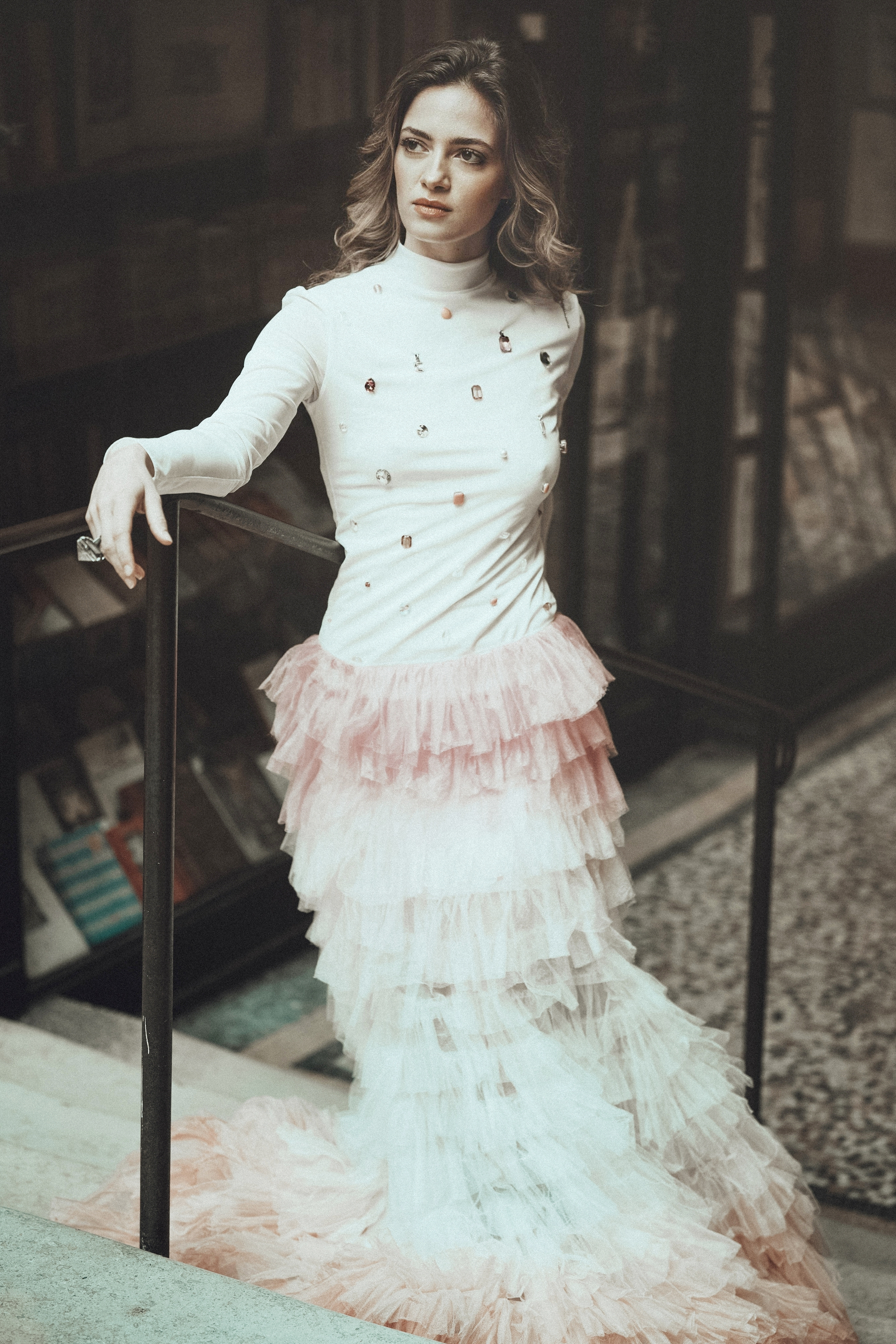
Who is your client; the person you address with your designs?
Our customer is a powerful and fierce woman. She needs regularly to dress up to go to events, galas, film festivals, receptions and she wants to stand out, to make a sensation at every appearance, to wear one-of-a-kind pieces. She needs to be perfect, tasteful, breathtaking and unforgettable in every situation. Our designs match her determination, confer her strength, empower her to feel and look her best self. Plus, it’s the assurance no one else will be dressed the same. She is an ambitious woman with busy days, not always having time to change from head to toe. Our creations accompany her throughout her day, matching different events within the same day.
Thus we imagined a variety of layering items to glam up a look: harness tops to be worn over a classic outfit to give it a contemporary edge or overskirts with trains transforming a work ensemble into a memorable evening dress for a dinner party, enhancing her allure while fitting perfectly to her lifestyle.
What does luxury mean to you? What are the next generation of luxury shoppers looking for?
Luxury is the mix of quality and exclusivity. The highest standards of production: remarkable fabrics, thorough design, impeccable fitting, attention to details, embroideries sewn by hand, refined finishings… Everything has been carefully thought of and crafted to perfection. Real luxury to me is a very special piece that you will treasure over time, even pass it along from one generation to the next. But it’s a sense of exclusivity as well: each luxury piece should make you feel unique and extraordinary. I think customers have a strong sense of curiosity and are very much informed. Their taste is becoming ever sharper, they look at all the fashion shows, thus increasingly refining their preferences and they know exactly what they want. Our brand considers it crucial, and moreover, truly exciting to foster a privileged relationship where the client is actively involved, in direct connection with the designer, in the creative process of the dress: it ends up having so much more emotional value. Naturally, it is also up to us as professional craftspeople to push further, to keep surprising them and provide them with what they didn’t realise they desired and take them where they wouldn’t have imagined.

“All brands need to keep working towards a more sustainable system, having the courage to make the profound changes it needs to preserve our planet.” — Moïra Cristescu
Regarding sustainability, what has changed (if anything) in fashion since you began designing?
Sustainability was hardly a topic when I first started. Now, most upcoming designers have eco-friendly commitments (up-cycling, made-to-order manufacturing, ecological dyes, zero-waste, reducing shipping and packaging…) and most established brands have at least had discussions about it, and some are trying to implement more circularity in their production process. All brands need to keep working towards a more sustainable system, having the courage to make the profound changes it needs to preserve our planet. The fashion industry still has a long journey ahead to shed its position as the second most polluting industry, but it is a start and I am hopeful.
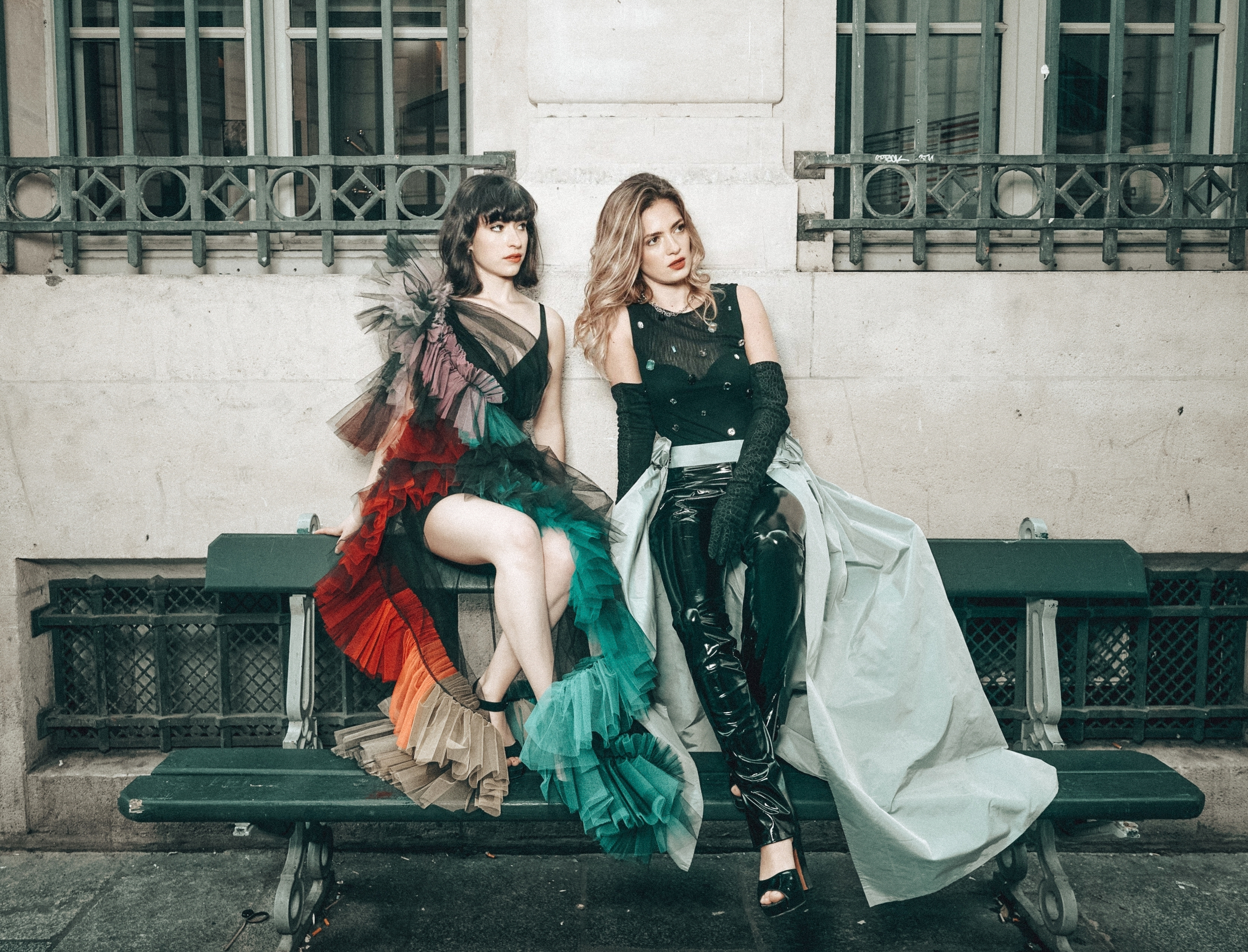
Editorial Photo Credits:
Photographer: Silvere Koulouris
Make-up and hair artist: Pauline Gillard
Models: Clémence Ehkirch, Marion Sedlak, Lyne Salis
Photos: Courtesy of Moïra Cristescu Paris
related posts


